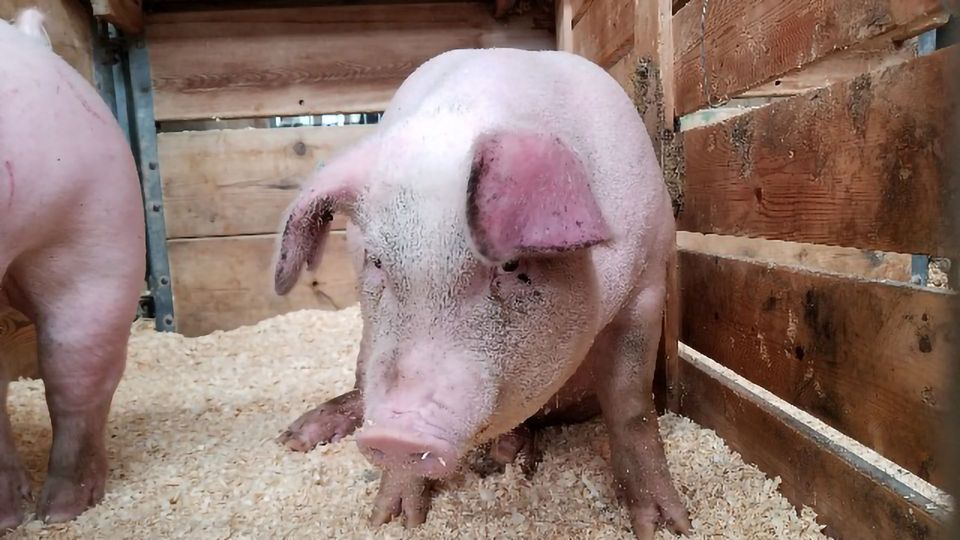New Strain of Swine Flu Is Something We "Need To Keep Our Eye On"

Complete the form below to unlock access to ALL audio articles.
A study published June 29 in the journal Proceedings of the National Academy of Sciences (PNAS) has drawn attention to a new strain of the H1N1 virus, known as G4 EA H1N1.
Some reports are describing the strain as having "pandemic potential". At a US Senate Hearing on June 30, Dr Antony Fauci, Director of the National Institute of Allergy and Infectious Disease (NIAID), addressed the situation. He said: "It's not, "so called", an immediate threat where you're seeing infections, but it's something that we need to keep our eye on."
Understanding influenza A
The H1N1 virus is a subtype of the influenza A virus. The (H1N1)pdm09 virus caused the 2009 swine flu pandemic , which is estimated to have killed between 151,700 to 575,40000 people worldwide during the first year it circulated. Influenza A is associated with the 1918 flu pandemic, which resulted from an H1N1 virus with genes of avian origin.
Influenza A viruses are categorized into subtypes based on two proteins that present on the surface of the virus, hemagglutinin (H) and neuraminidase (N). H triggers red blood cells to clump, and binds the virus to the infected cell, whereas N is an enzyme which assists in moving the virus particles through an infected cell.
Pigs are susceptible to avian, swine and human influenza A viruses, and as such are often referred to as "mixing vessels" or intermediate hosts for generating viruses that can infect humans, as demonstrated by the 2009 pandemic.
To that end, it's important for scientists to maintain surveillance of the types of influenza virus that present in pigs, as it can act as a measure for prewarning future influenza pandemics. This was the aim of the new study published in PNAS.
A new strain with "pandemic potential"?
The research team conducted a surveillance of pigs in 10 Chinese provinces with high-density pig populations from 2011 to 2018. They collected >30,000 nasal swabs, and from these samples isolated 179 swine flu strains.
Through sequence analysis of the H and N genes, they found that the strains included EA H1N1 (n = 165), pdm/09 H1N1 (n = 7), CS H1N1 (n = 1), H3N2 (n = 4), and H9N2 (n = 2) viruses, indicating that EA H1N1 is the predominant subtype virus circulating in pig populations in China.
Within EA H1N1, lineage classification revealed six genotypes, G1–G6 from 2011 to 2018. G4 EA H1N1 has shown a sharp increase in prevalence since 2016 and is the predominant genotype in circulation in the pigs detected across the 10 provinces in the study.
Swine-exposed humans possess G4 antibodies
In addition to surveilling the pigs, the scientists also collected 338 blood samples from workers on 15 pig farms and 230 individuals in nearby households. They found that 10.4% of the workers and 4.4% of individuals in nearby households possessed antibodies to G4 EA H1N1. Of note is the fact that workers aged 18–35 years tested positive at a higher percentage of 20.5%.
In the paper, the authors said: "Similar to pdm/09 virus, G4 viruses have all the essential hallmarks of a candidate pandemic virus. Of concern is that swine workers show elevated seroprevalence for G4 virus. Controlling the prevailing G4 EA H1N1 viruses in pigs and close monitoring in human populations, especially the workers in swine industry, should be urgently implemented."
"A limited serological investigation found that the general population, who had little opportunity to contact pigs, lacked antibodies against G4 virus, but swine-exposed adult populations showed elevated seroprevalence (10.4%, 35/338), which further supports our hypothesis of G4 virus transmission from pigs to human. It is of concern that human infection of G4 virus will further human adaptation and increase the risk of a human pandemic."
The fact that evidence of human to human transmission is yet to be demonstrated is of critical importance, as this is a necessity for large-scale infection.
"There are all sorts of virus surveillance programs going on around the world. Most of them we don't talk about much because we don't want to freak people out, but this is one we're definitely keeping an eye on," explained Dr Sanjay Gupta, chief medical correspondent for CNN, in a news report.
Reference: Sun et al. (2020). Prevalent Eurasian avian-like H1N1 swine influenza virus with 2009 pandemic viral genes facilitating human infection. Proceedings of the National Academy of Sciences. DOI: https://doi.org/10.1073/pnas.1921186117


